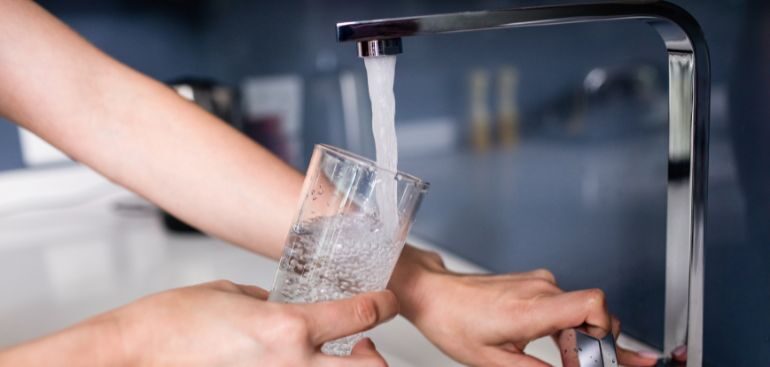If you need clean water, you might wonder if you should use distilled water or purified water. Or maybe you wonder if you can use these two types of water interchangeably. The answer to both questions depends on how you plan to use the water. Discover the difference between distilled water and purified water.
Read more: Distilled Water vs. Purified Water: What’s the Difference?What Is Distilled Water?
Distilled water is free of minerals and contaminants, such as viruses, bacteria, and various chemicals. To make distilled water, someone boils the water and collects the steam. Contaminants and minerals don’t evaporate with the water, so they get left behind. Once the steam cools, it condenses and turns into distilled water.
What Is Purified Water?
Purified water still contains some healthy minerals, but the purification process removes pollutants, bacteria, fungi, parasites, and some metals. Whereas distilled water results from only one method, the water purification process can use different methods, including filtration, coagulation, sedimentation, and disinfection. These methods result in purified water that’s 99 percent free of contaminants.
The Reverse Osmosis Purification Method
Reverse osmosis (RO) is a top water purification method. In the key point of this process, pressure forces water through a semipermeable membrane. The membrane is semipermeable because it allows water to flow through but blocks contaminants. As such, contaminants remain behind on one side of the RO membrane, and the water on the other side of the membrane is clean.
One of the differences between distilled water and purified water is that, with a reverse osmosis system, purified water can go through many stages of filtration. When the water first reaches the RO system, it goes through prefiltration to remove contaminants that might damage the RO membrane. Then, the water travels through the RO membrane and goes into a storage tank. Finally, when you turn on your tap, the water travels from the storage tank through a postfilter into your faucet.
The thorough process of reverse osmosis is more efficient than distilling your home water. While you might want to use a mixture of distilled water in your equipment, such as an iron or your car’s cooling system, RO-purified water is best for drinking and use around your home.
Purify Your Water With Good Water Company
Use the services of the Good Water Company to meet your home drinking water filtration needs. We give you a customized filtration service designed to make your home drinking water refreshing and healthy. Contact us today.

